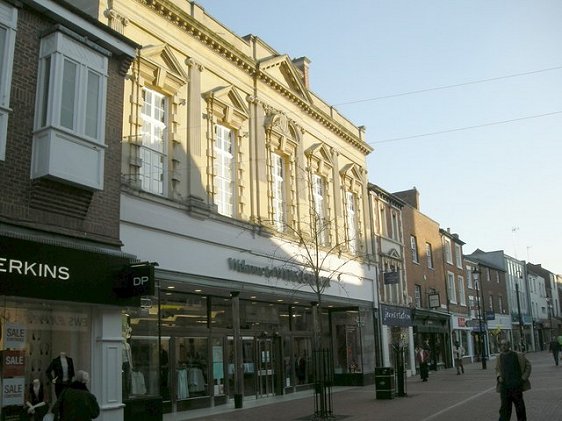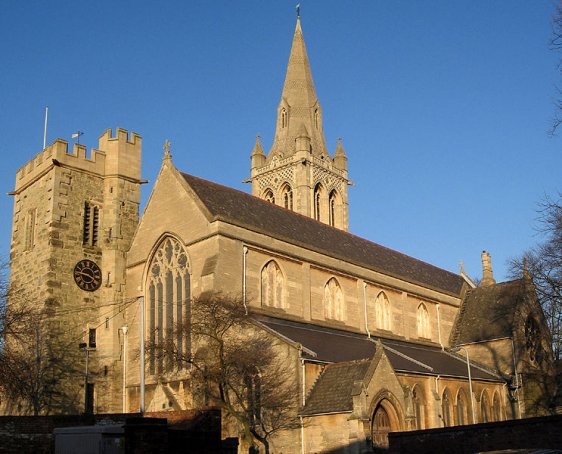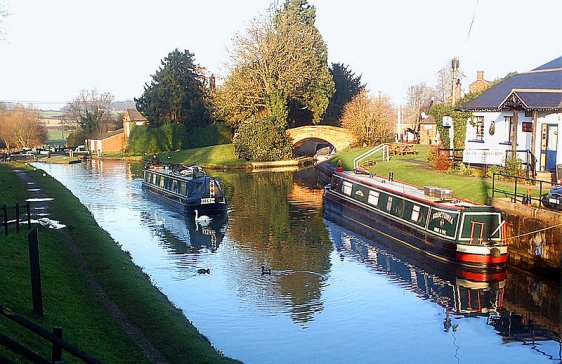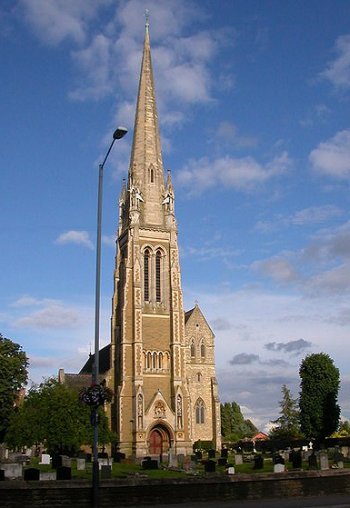 Rugby, Warwickshire, England: Source: https://commons.wikimedia.org/wiki/File:Rugby_-High_Street_-_geograph.org.uk_-_690778.jpg
Rugby, Warwickshire, England: Source: https://commons.wikimedia.org/wiki/File:Rugby_-High_Street_-_geograph.org.uk_-_690778.jpgAuthor: Ian Rob

Rugby is a market town in Warwickshire, England. With a population of 62,000 people (2012 estimate), it is the second largest town in Warwickshire. Rugby is also the administrative center for the Borough of Rugby, which has a population of 92,000 people. It is located 21 km (13 mi) to the east of Coventry, near the borders with Northamptonshire and Leicestershire.
Rugby is of course widely renowned as the birthplace of the sport that bears its name. The town dates back to the Anglo-Saxon period, though human habitation here is evident since the Iron Age. There was also a Roman settlement in the area known as Tripontium.
Rugby was listed in the Domesday Book of 1086 as Rocheberie. The town was granted a market charter in 1255, and this right helped it developed into a country market town. In 1567, Rugby School was founded. It is today one of the oldest independent schools in Britain. It was also at Rugby School that the game of rugby was invented in 1823.
 St Andrew's Church, Rugby: Source: https://en.wikipedia.org/wiki/File:St_Andrew%27s_Church,_Rugby.jpg
St Andrew's Church, Rugby: Source: https://en.wikipedia.org/wiki/File:St_Andrew%27s_Church,_Rugby.jpgAuthor: G-Man

Over the centuries Rugby has grown, absorbing surrounding villages into its boundaries, among them Bilton, Hillmorton, Brownsover and Newbold-on-Avon. These were officially incorporated in 1932, within the boundaries of a borough. The town center of Rugby itself retains many of the historic buildings from the Victorian period. It has of course kept with the times, and has a number of modern shopping centers, including The Clock Towers, an indoor mall opened in 1980.
Visiting Rugby
From London, take the M1 motorway to Junction 18, then head west on the A428 road until reaching Rugby. Oxford Canal at Hillmorton, Rugby: Source: https://commons.wikimedia.org/wiki/File:Oxford_Canal_at_Hillmorton.jpg
Oxford Canal at Hillmorton, Rugby: Source: https://commons.wikimedia.org/wiki/File:Oxford_Canal_at_Hillmorton.jpgAuthor: G-Man

Places of Interest in Rugby
- Benn Hall: Venue for conferences, seminars, exhibitions and other events in Rugby.
- Brandon Marsh: A Site of Special Scientific Interest and nature reserve adjacent to the River Avon.
- Coombe Abbey: Originally a 12th century monastery, then a former country house and today a hotel, this is a Grade I listed building in the countryside of Warwickshire.
- Draycote Water: Reservoir and country park in Dunchurch, about 6 km to the south of Rugby.
- Dunchurch: Village on the southwestern outskirts of Rugby.
- Oxford Canal: 78-mile long (126 km) narrow canal linking Oxford with Coventry via Banbury and Rugby.
- Rugby Football Museum: Museum containing memorabilia related to rugby.
- Rugby School Museum: Museum showcasing the illustrious history of the school.
- Rugby VLF Transmitter: Radio transmitting station to the east of Rugby.
- Rupert Brooke Statue: Statue honoring English poet and also said to be the handsomest young man in England.
- St Andrew's Church: Anglican parish church occupying site that has been a church since the 13th century.
- St Maries Church: The main Roman Catholic church in Rugby with also the tallest church spire in Warwickshire.
- Stanford Hall: Stately home in Leicestershire, near Rugby.
- Thomas Hughes Statue: Statue honoring English lawyer and author.
- William Webb Ellis Statue: Statue to the Anglican clergyman credited with inventing the game of rugby whilst a pupil at Rugby School.
 Latest updates on Penang Travel Tips
Latest updates on Penang Travel Tips

Copyright © 2003-2025 Timothy Tye. All Rights Reserved.

 Go Back
Go Back St Maries Church, Rugby: Source: https://en.wikipedia.org/wiki/File:St_Maries_Church,_Rugby_484475.jpg
St Maries Church, Rugby: Source: https://en.wikipedia.org/wiki/File:St_Maries_Church,_Rugby_484475.jpg